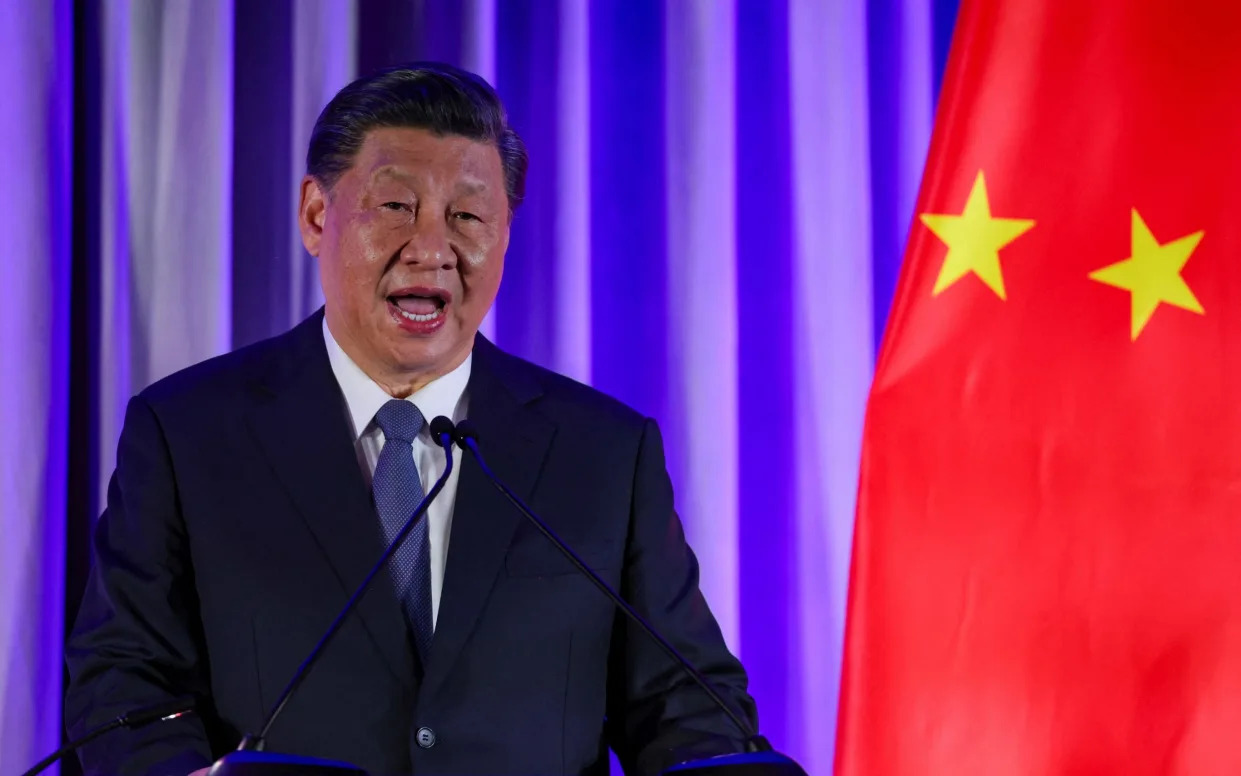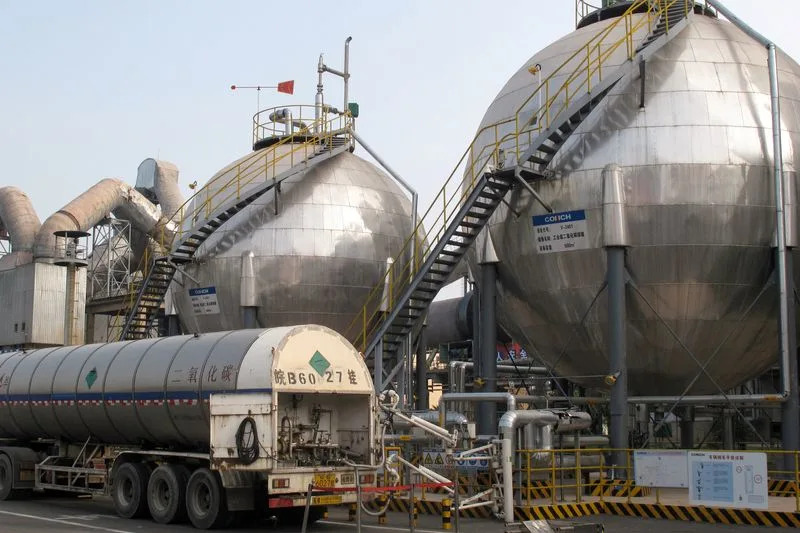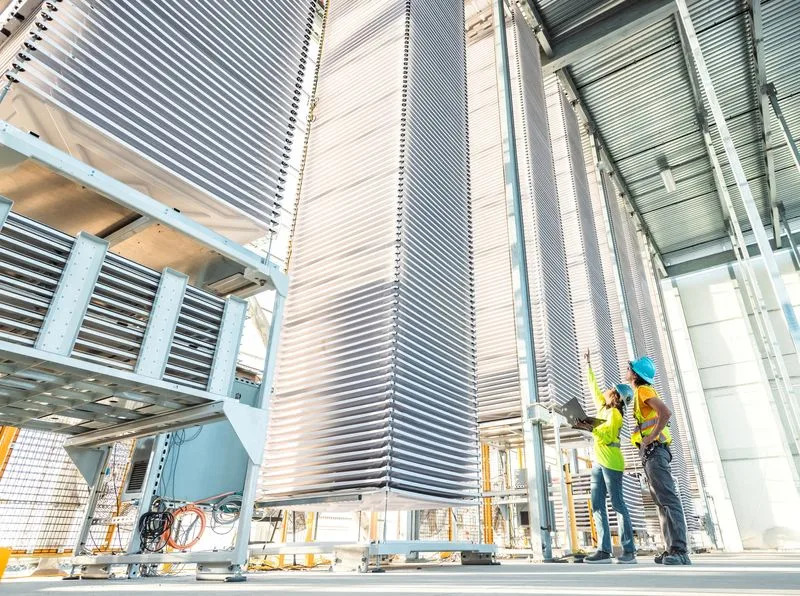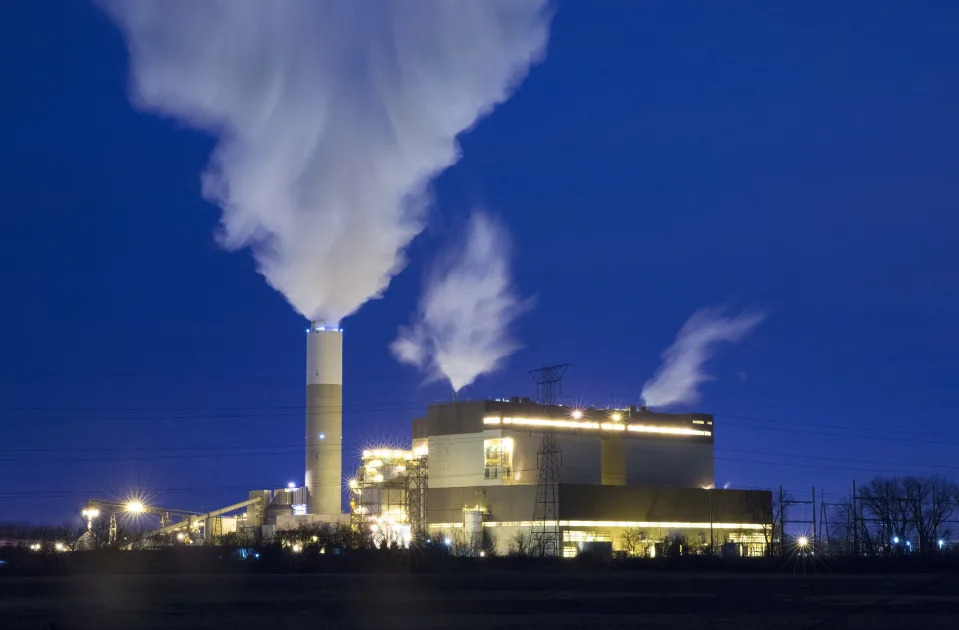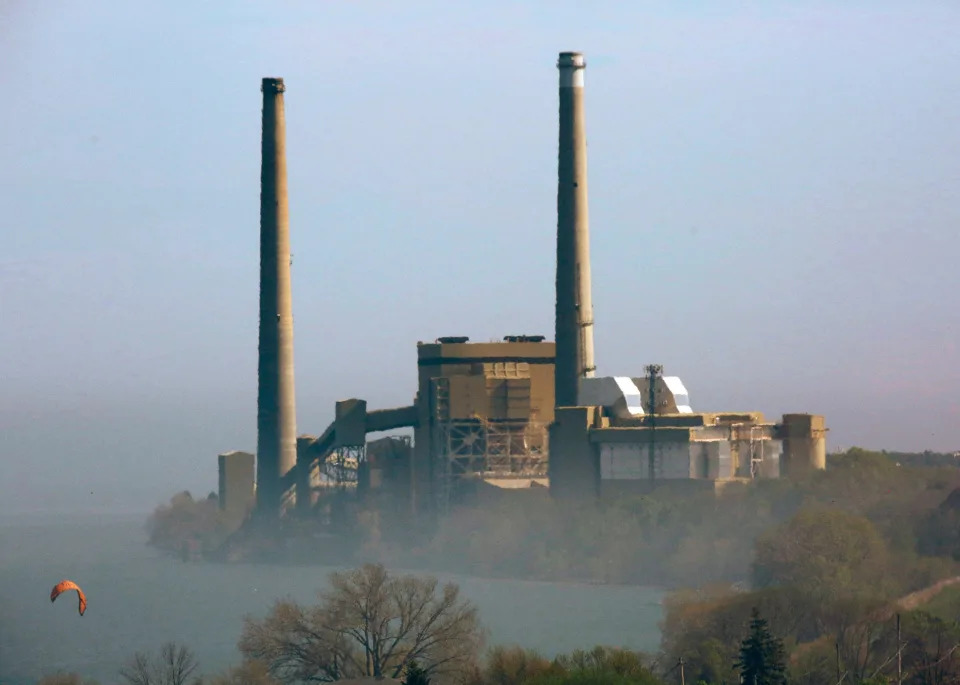ARCHAEOLOGY
‘Sutton Hoo king’s lost temple’ discovered in SuffolkSarah Knapton
Wed, November 22, 2023

Treasure from the Sutton Hoo site on display at the British Museum - David Ro
A lost 1,400-year-old temple, said to have been built by the English king buried at Sutton Hoo, may have been discovered in Suffolk.
The Venerable Bede, a monk and historian, wrote that King Redwald, who died in AD 625, built a temple housing altars to both Christ and pagan gods.
The monarch, thought to have been the person buried in a ship at Sutton Hoo, was the first East Anglian king to convert to Christianity but also kept links to other religions.
The temple’s location was believed to have been lost in time, but archaeological teams have uncovered the remains of a building in Rendlesham, close to King Redwald’s burial place, which may be the site mentioned by Bede.
Volunteers from Rendlesham Revealed, a community archaeology project, made the discovery, along with that of a number of other buildings, during a dig earlier this summer, Suffolk County Council has revealed.

Excavations at Rendlesham, Suffolk - Jim Pullen/Suffolk County Council
“Its distinctive and substantial foundations indicate that one of the buildings, 10 metres long and five metres wide, was unusually high and robustly built for its size, so perhaps it was constructed for a special purpose,” said Prof Christopher Scull, of Cardiff University and University College London.
“It is most similar to buildings elsewhere in England that are seen as temples or cult houses, and therefore it may have been used for pre-Christian worship by the early kings of the East Angles. The results of excavations at Rendlesham speak vividly of the power and wealth of the East Anglian kings, and the sophistication of the society they ruled.”
King Redwald reigned from around 599 to his death, and was referred to in the Anglo-Saxon Chronicle as a bretwalda – an Old English term meaning “Britain-ruler” or “wide-ruler”.
He is thought to be the most likely occupant of the Sutton Hoo ship burial. A second ship burial site was found nearby in 1998, which was thought to contain Regenhere, his son.
A dig in the same area last year by members of Rendlesham Revealed found evidence of a huge royal compound, including a large timber hall. The site was surrounded by a ditch of nearly one mile long that enclosed an area the size of 20 football pitches.

Volunteers excavating the remains of the ditch that enclosed the royal compound in Rendlesham - Suffolk County Council
Along with the temple, the new excavations this summer also uncovered evidence of fine metalworking associated with royal occupation, including a mould used for casting a decorative horse harness similar to that found at Sutton Hoo.
The archaeological discoveries show that Rendlesham has been a location for human settlement and activity for 6,000 years from the fourth millennium BC to the present day.
The council said the area was “most important” when it was a royal centre from the 6th to 8th centuries AD.
The latest dig also uncovered a Second World War searchlight emplacement, which was part of a searchlight battery recorded by US Force aerial photography in December 1943.
A schoolboy digging potatoes in Scotland found an ancient Egyptian statue. Nobody knows how it got there.
Mia Jankowicz
Tue, November 21, 2023
A series of wild coincidences led to the discovery of ancient Egyptian artifacts buried in Scotland.
A student at a Scottish school unearthed the first ancient treasure in 1952.
Researchers are still figuring out how they got there.
Historians are piecing together the wild story behind a series of highly improbable finds of ancient Egyptian treasure — dug up thousands of miles away in Scotland.
It starts in 1952, when a schoolboy was digging up potatoes as a punishment for bad behavior at his school near the tiny village of Monimail, in Fife.
He struck something that he thought was a potato at first — but it turned out to be the head of an ancient Egyptian statue.
Historians discovered that the sandstone statue dated back to the mid-12th Dynasty, or about 1922 to 1855 BC.
More finds would follow.
Fourteen years later, the same boy — identified by historians as Mr McNie — was teaching at the school. He was running an exercise class when one of his pupils landed awkwardly on something sticking out of the ground.
Digging further, he unearthed an Egyptian bronze statuette of a bull, which historians dated to between 664 and 332 BC.
Then, in 1984, schoolboys who had explored the same site with a metal detector alerted a curator, Elizabeth Goring, to another find — an Egyptian bronze figurine.

Leaded ancient Egyptian bronze figurine of a priest dating to about 1069-656 BC, found at a school in Scotland.
Archaeologists Think They Might Have Found the Real Noah’s Ark
Tim Newcomb
Updated Wed, November 22, 2023

Scientists Claim They May Have Found Noah’s Arkgaiamoments - Getty Images
"Hearst Magazines and Yahoo may earn commission or revenue on some items through these links."
Archaeologists believe they may have discovered the final location of Noah’s Ark on Turkey’s Mount Ararat.
Soil samples from atop the highest peaks in Turkey reveal human activity and marine materials.
Dating of the rock and soil from the location match with Biblical timing of Noah’s Ark.
Researchers from a trio of universities in Turkey and the United States have spent roughly a year analyzing the rock and soil in the famous Durupinar formation on Mount Ararat, the highest mountain in Turkey. They believe that the boat-shaped site may hold the ruins of the legendary Noah’s Ark.
The Biblical account of Noah tells of God instructing Noah to build a giant ark to spare his family and pairs of animals from an impending flood meant to destroy the evil and wickedness running rampant on Earth. Noah’s Ark is said to have come to rest on the mountains of Ararat following a 150-day flood about 5,000 years ago.
Researchers now believe they’ve found evidence of human activity near the boat-shaped formation in the mountains from between 5500 and 3000 BC.
Faruk Kaya, AICU vice rector professor, says that analyzing rocks and soil from the uniquely shaped area on the mountain shows human activity in the region, timed to the years following the flood in the legend of Noah’s Ark. “In terms of dating, it is stated that there was life in this region as well,” Kaya says, according to The Daily Mail. “This was revealed in the laboratory results.”
Human activity, however, does not a Biblical account prove. The Durupinar formation has been put forth as a potential ark resting place for many years, and has received extensive attention from those hoping to find Noah’s Ark. Despite the hype, archaeologists have consistently reaffirmed over the years that the formation is natural, not the result of a petrified shipwreck, and that there is no geologic record of a global flood like the one described in religious texts. Some believe that a more local flood may have been possible, but that is also debated.
The team says it isn’t currently possible to say that Noah’s Ark itself was at the Durupinar site.
“With the dating, it is not possible to say that the ship is here,” Faruk Kaya, one of the researchers on the project, said according to Turkish news publication Hurriyet. “We need to work for a long time to reveal this. In the next period, we agreed to carry out a joint study under the leadership of ITU, Andrew University and AICU. Three universities will continue their work in this field in the future.”
For now, the scientists point to the evidence in the soil of “clayey materials, marine materials, and seafood,” according to Hurriyet, within the geological formation as evidence.
The team of researchers placed a renewed focus on the region in 2021 by exploring varying geological areas—including the Durupinar formation, which is made of limonite that bears resemblance to a ship like Noah’s Ark. Further exploration led the team to take the rock and soil samples from the country’s highest peaks for laboratory analysis.
The story of God, Noah, his family, the animals in his care, and Noah’s Ark has caused much debate for centuries. The search for proof of this event will likely continue for some time, and only that time will tell if it is there to be found.
Mia Jankowicz
Tue, November 21, 2023
A series of wild coincidences led to the discovery of ancient Egyptian artifacts buried in Scotland.
A student at a Scottish school unearthed the first ancient treasure in 1952.
Researchers are still figuring out how they got there.
Historians are piecing together the wild story behind a series of highly improbable finds of ancient Egyptian treasure — dug up thousands of miles away in Scotland.
It starts in 1952, when a schoolboy was digging up potatoes as a punishment for bad behavior at his school near the tiny village of Monimail, in Fife.
He struck something that he thought was a potato at first — but it turned out to be the head of an ancient Egyptian statue.
Historians discovered that the sandstone statue dated back to the mid-12th Dynasty, or about 1922 to 1855 BC.
More finds would follow.
Fourteen years later, the same boy — identified by historians as Mr McNie — was teaching at the school. He was running an exercise class when one of his pupils landed awkwardly on something sticking out of the ground.
Digging further, he unearthed an Egyptian bronze statuette of a bull, which historians dated to between 664 and 332 BC.
Then, in 1984, schoolboys who had explored the same site with a metal detector alerted a curator, Elizabeth Goring, to another find — an Egyptian bronze figurine.

Leaded ancient Egyptian bronze figurine of a priest dating to about 1069-656 BC, found at a school in Scotland.
National Museums Scotland
These discoveries — and the mystery of how they ended up in a Scottish schoolyard — are detailed in a new paper by Goring and fellow curator Margaret Maitland.
"When I saw the little bronze figurine of a man in 1984, it was obvious the three objects must be connected," Goring wrote.
Goring got one of the boys with the metal detector to show her where they found the figurine, so she could excavate further.
"We found nothing," she wrote.
But just as they were about to give up, one of the geologists wandered into a different area — and spotted another figurine lying on the ground. It was a "shabti," a small, mummy-shaped sculpture.

This ancient Egyptian faience shabti dates to about 664-332 BC and was found at a school in Scotland.
These discoveries — and the mystery of how they ended up in a Scottish schoolyard — are detailed in a new paper by Goring and fellow curator Margaret Maitland.
"When I saw the little bronze figurine of a man in 1984, it was obvious the three objects must be connected," Goring wrote.
Goring got one of the boys with the metal detector to show her where they found the figurine, so she could excavate further.
"We found nothing," she wrote.
But just as they were about to give up, one of the geologists wandered into a different area — and spotted another figurine lying on the ground. It was a "shabti," a small, mummy-shaped sculpture.

This ancient Egyptian faience shabti dates to about 664-332 BC and was found at a school in Scotland.
National Museums Scotland
That led to a whole trove of Egyptian objects being unearthed, which are now in the collection of National Museums Scotland.
Some of the finds turned out to be 19th-century copies, but many were genuine ancient relics.
But there was still the mystery of how they got there.
There's no documentation of anyone who owned the property, in its long history, having amassed a collection of Egyptian objects.
Before Melville House was a school, it had belonged to David Leslie-Melville, the 7th Earl of Melville.

Volunteers excavate the site at Melville House in 1984
That led to a whole trove of Egyptian objects being unearthed, which are now in the collection of National Museums Scotland.
Some of the finds turned out to be 19th-century copies, but many were genuine ancient relics.
But there was still the mystery of how they got there.
There's no documentation of anyone who owned the property, in its long history, having amassed a collection of Egyptian objects.
Before Melville House was a school, it had belonged to David Leslie-Melville, the 7th Earl of Melville.

Volunteers excavate the site at Melville House in 1984
National Museums Scotland
The most likely scenario, the researchers now say, is that the objects belonged to Melville's son, Viscount Balgonie, who visited Egypt sometime in 1856 to help with health issues.
His sisters, who were there with him, could have brought vendors selling artifacts to his sick bed while he was there, the researchers said.
Balgonie died a year later, back in Scotland, at the tender age of 24.
The researchers theorize that the objects were then consigned to an outbuilding, and forgotten. The outbuilding was later demolished, and the objects buried with the remnants.
Another theory suggests that they were kept away from the main house because of superstition.
"Pharoah's curse" rumors were just beginning to emerge at this time, the researchers said.
The most likely scenario, the researchers now say, is that the objects belonged to Melville's son, Viscount Balgonie, who visited Egypt sometime in 1856 to help with health issues.
His sisters, who were there with him, could have brought vendors selling artifacts to his sick bed while he was there, the researchers said.
Balgonie died a year later, back in Scotland, at the tender age of 24.
The researchers theorize that the objects were then consigned to an outbuilding, and forgotten. The outbuilding was later demolished, and the objects buried with the remnants.
Another theory suggests that they were kept away from the main house because of superstition.
"Pharoah's curse" rumors were just beginning to emerge at this time, the researchers said.
Archaeologists Think They Might Have Found the Real Noah’s Ark
Tim Newcomb
Updated Wed, November 22, 2023

Scientists Claim They May Have Found Noah’s Arkgaiamoments - Getty Images
"Hearst Magazines and Yahoo may earn commission or revenue on some items through these links."
Archaeologists believe they may have discovered the final location of Noah’s Ark on Turkey’s Mount Ararat.
Soil samples from atop the highest peaks in Turkey reveal human activity and marine materials.
Dating of the rock and soil from the location match with Biblical timing of Noah’s Ark.
Researchers from a trio of universities in Turkey and the United States have spent roughly a year analyzing the rock and soil in the famous Durupinar formation on Mount Ararat, the highest mountain in Turkey. They believe that the boat-shaped site may hold the ruins of the legendary Noah’s Ark.
The Biblical account of Noah tells of God instructing Noah to build a giant ark to spare his family and pairs of animals from an impending flood meant to destroy the evil and wickedness running rampant on Earth. Noah’s Ark is said to have come to rest on the mountains of Ararat following a 150-day flood about 5,000 years ago.
Researchers now believe they’ve found evidence of human activity near the boat-shaped formation in the mountains from between 5500 and 3000 BC.
Faruk Kaya, AICU vice rector professor, says that analyzing rocks and soil from the uniquely shaped area on the mountain shows human activity in the region, timed to the years following the flood in the legend of Noah’s Ark. “In terms of dating, it is stated that there was life in this region as well,” Kaya says, according to The Daily Mail. “This was revealed in the laboratory results.”
Human activity, however, does not a Biblical account prove. The Durupinar formation has been put forth as a potential ark resting place for many years, and has received extensive attention from those hoping to find Noah’s Ark. Despite the hype, archaeologists have consistently reaffirmed over the years that the formation is natural, not the result of a petrified shipwreck, and that there is no geologic record of a global flood like the one described in religious texts. Some believe that a more local flood may have been possible, but that is also debated.
The team says it isn’t currently possible to say that Noah’s Ark itself was at the Durupinar site.
“With the dating, it is not possible to say that the ship is here,” Faruk Kaya, one of the researchers on the project, said according to Turkish news publication Hurriyet. “We need to work for a long time to reveal this. In the next period, we agreed to carry out a joint study under the leadership of ITU, Andrew University and AICU. Three universities will continue their work in this field in the future.”
For now, the scientists point to the evidence in the soil of “clayey materials, marine materials, and seafood,” according to Hurriyet, within the geological formation as evidence.
The team of researchers placed a renewed focus on the region in 2021 by exploring varying geological areas—including the Durupinar formation, which is made of limonite that bears resemblance to a ship like Noah’s Ark. Further exploration led the team to take the rock and soil samples from the country’s highest peaks for laboratory analysis.
The story of God, Noah, his family, the animals in his care, and Noah’s Ark has caused much debate for centuries. The search for proof of this event will likely continue for some time, and only that time will tell if it is there to be found.
